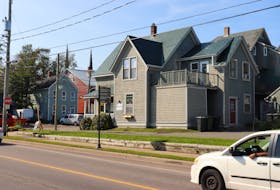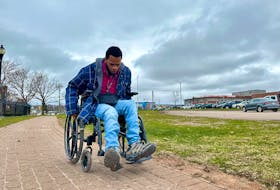SUMMERSIDE, P.E.I. - Don’t be shocked if you're feeling down in the dumps this month.
Jan. 15, marked “Blue Monday,” said to be the most depressing day of the year.
The idea of Blue Monday was founded by a travel company as a formula to highlight any post-holiday issues. Since its inception, science is proving that there may be something to feeling blue around this time of year.
Dr. Heather Keizer, chief of Mental Health and Addictions P.E.I., says the most depressing day of the year is pseudo-science, but it is reflective of some truth.
“Blue Monday was arbitrarily chosen to be in January. It’s not based on scientific knowledge," said Keizer. "But, what’s interesting is that it is reflective of in the winter months people feel lower and blue. And that’s true in northern countries.”
That’s where Seasonal Affective Disorder (SAD) comes in, Keizer explained.
There have been correlations between SAD and winter months in areas like Canada and Scandinavia, according to the National Institute of Health in the U.S., said Keizer.
“It boils down to biology. Humans are biological creatures, and just like other mammals we respond to light. And where there is less light, there is the slowing down of the human body, less production of serotonin and hibernation-like characteristics.”
Symptoms of SAD are similar to hibernation, but they also include sadness, lowered moods, fatigue, apathy and reduced dietary intake.
SAD affects about two to five per cent of the population and “winter blues” (a slightly less serious version of SAD) affects about 10 to 15 per cent of Canada’s population.
Practical Prevention
- How to combat SAD or the Winter Blues
- Don’t go on your phone, laptop or watch tv within an hour of going to bed
- Increase exposure to light by going outside or light therapy
- Avoid depressants like alcohol or marijuana
- Get more exercise
- Eat nutritious foods high in tryptophan
- So what can you do to elevate your moods?
There are a few things you can do biologically; increase exposure to light, exercise and get a good sleep, said Keizer.
“First do your best to get a good night’s sleep, which is directly related to light. A part of our brain called the locus coeruleus is very sensitive to light. It helps our bodies produce more serotonin, which produces more elevated moods. So you’ll see a substantial decrease in the quality of sleep of individuals who are on their laptops or phones in bed before going to sleep.”
People can also try to increase the light they are exposed to during the day by going outside to absorb the suns rays.
“Regular office lights aren’t bright enough and aren’t full spectrum. (Absorbing sunlight) in the winter it can be difficult, but one thing we have to our advantage is snow. The sun’s rays can reflect off the snow allowing people to absorb a fair amount of light and the development of vitamin D”
But with the short days in the winter, another option is light therapy, which Keizer uses.
“The key thing with light therapy is ensuring you are getting the right dosage of light and for the right period of time, which is about more than 10,000 lux of light for no more than 15 minutes in the morning and 15 minutes when you get home at the end of the workday.”
Overexposure can cause nausea or manic episodes.
Indicators of Seasonal Affective Disorder:
- Disrupted sleep patterns
- Leaden paralysis: your body feels heavy or weighed down
- Reduced interest in sex
- Irritability
- Apathy
- Fatigue
- Reduced dietary intake
Keizer says during the darker months it’s also important to reduce exposure to depressants like alcohol or marijuana.
“Both (alcohol and marijuana) can make SAD worse. Alcohol, by definition, is a depressant and can increase the chance an individual will feel worse.
“Similarly, people make assumptions about marijuana being therapeutic for this because some people feel it’s relaxing. Unfortunately it is not helpful and can increase the levels of apathy quite significantly in individuals.”
Getting more exercise is also important.
“People underestimate the power of a walk. More exercise significantly improves mental and physical health especially at this time of year and especially by getting outdoors because of exposure to light.”
Being outdoors and exercising can enhance moods, sleep and trick your body into believing it’s the summer, explained Keizer.
“It tricks our very primitive bodies, like hunters and gatherers, into thinking it must be the summer time, or awaken natural biorhythms into having more energy and more positive moods.”
Eating balanced and nutritious foods can also help.
“Our bodies cannot produce serotonin without proper nutrients. We need to be on diets that are high in tryptophan; an amino acid that our bodies use to help create serotonin. Tryptophan is contained in nuts, turkey, chicken and other protein based foods.
She concluded, “There are a lot of basic easy things people can do to boost their moods and prevent SAD.”









